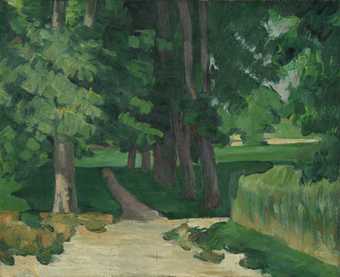Cézanne’s watercolours are studies preparatory to painting in oil, notes of strong sensations before nature afterwards to be rendered in the more permanent and solid seeming medium. They are also solutions of those problems of picture making which were his lifelong obsession, and which, at a certain period of his life, could be more easily settled in watercolour than in oil.
In about 1883 Cézanne’s struggle to achieve the greatest possible modelling through colour had led to a density of texture which the passage of time has made most beautiful to us, but which Cézanne felt to be too congested. He wished to attain the same effect with far greater simplicity of means.
He therefore limited his palette to green, blue and a few warm earth colours and adopted as an exercise in economy a spare and delicate technique of watercolour. What began as a discipline became a delight; and some of the paintings here exhibited were clearly executed for their own sakes. But they retain the evidence of their origin. No attempt is made at a full continuous description of appearances; the white paper predominates and the eye leaps form on complex of colour to another, forgetting that in between is nothing but whiteness.
Why is it that in spite of this lack of finish Cézanne’s watercolours give such a satisfying sense of completeness? For one thing because he knew how to concentrate all his resources on the essentials of a composition.
In this, as in other ways, Cézanne’s watercolours are a key to the understanding of his oils, and, in fact, greatly influenced his oil technique. They show, for example, his uneasy relation with the contour which, he is reputed to have said, escaped him, but which, in fact, gave him the dreaded sense of imprisonment.

